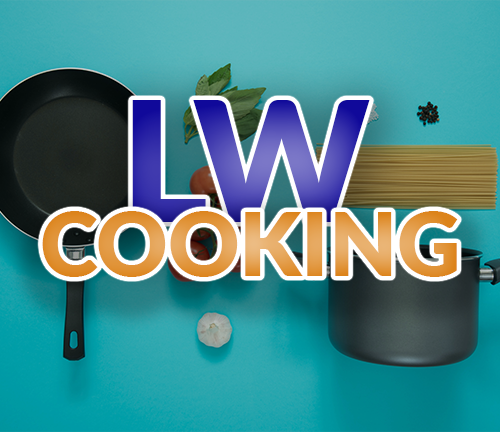I’m well aware that it doesn’t necessarily improve anything, which is why I’ve never sanded my Lodge pan down. However, I also don’t see how it would make the pan worse, which is why I’m asking how it impacts the ability for seasoning to adhere, the only thing this could possibly do to make the pan worse. I use a 1950s Wagner for my cast iron cooking now, and I much prefer its polished surface to that of a stock Lodge. I’ve done plenty of my own Googling to find anecdotal experience with sanding down the surfaces and did not find definitive answers on sanding, so if you have any sources on it being strictly worse or personal experience I’d be happy to learn more.
- 0 Posts
- 39 Comments
What grit did you use for this? I’ve always been curious about sanding down the rougher surfaces, but haven’t pulled the trigger since I’ve read conflicting results about seasoning after the fact.

 4·2 months ago
4·2 months agoLate to the party here, but I’d caution against buying sets. They often come bundled with lots of superfluous pans that your giftee might not use. If you know their normal cooking habits, I’d purchase individual pieces to make your own set. To that end, I’d probably say that you want to pick up just two skillets, a saucepan, and a pot, unless they’re starting from scratch and tossing all their other cookware.
For the pan, I think that a regular cast iron is a good choice. Cheap options here for a brand new pan are Lodge and Victoria, and they work as well as the more expensive boutique cast iron brands. You’ll likely have trouble finding nicer antique cast iron at thrift stores because it’s become rather popular to buy and resell Wagners, BSRs, and Griswolds for the price of new Lodges or more. If your giftee doesn’t mind used antiques, these three brands are all quite nice if you know what to look for. Definitely check for any signs of pitting if you look for a used one. If you really wanted to though, Field, Stargazer, and Butter Pat all have more expensive pans that are polished to have a smooth surface. This will not affect the performance of the pan in any way, shape, or form. If they cook with tomatoes or other acidic foods a lot, you’re going to want to opt for an enameled skillet. Le Creuset and Staub are the default answers here, since they have a long history and lifetime warranty. However, if you want something cheaper, Tramontina and Lodge also make enameled skillets. As for size, a 10-inch skillet should be sufficient for a family of 2-4, while a 12-inch skillet or larger would be necessary for larger families. These skillets get much heavier as you increase in size, so there are some downsides to just picking up the largest size available.
Personally, I find that I only ever need one cast iron skillet, because I just don’t ever cook two separate dishes at the same time that would take advantage of the main advantages of cast iron (great heat retention and the ability to go from stovetop to oven). If you think they’d like it, I would suggest going with stainless steel for a second skillet. It’s capable of handling acids, heats quickly, is oven safe, and can be used to build fond. It’ll also last a lifetime with proper care. Here, almost any fully clad skillet is suitable, but some of the splurge options are Demeyer and Hestan. I have no personal experience with them, but the lack of rivets does look rather nice. I use All-Clad skillets myself, but the handle shape can be unwieldy on some of the lines so they aren’t for everyone. Great Jones is a direct to consumer brand that makes some pretty looking cookware, but aren’t necessarily cheap. More budget options that still do the job perfectly well are Calphalon and Tramontina. I’m sure many other fully clad options out there are also great, these are just the ones that I could think of off the top of my head and believe are worth taking a look at. Given the sloped edges of most stainless steel skillets, you’d probably want something in the 12-inch range. Alternatively, a stainless steel saute pan could be good. A 3qt size could bridge some of the gap between a skillet and a pot.
On the topic of stainless steel, I also think it’s the material of choice for a small saucepan. In my opinion, cast iron is just too heavy and changes temperature too slowly to be suitable for a saucepan. All the same brand recommendations apply when looking for a saucepan. I like the 1qt size and it’s probably what I use the most, but anything from 1-2qt is probably good. Too large and you end up with something too similar to the dutch oven
For a pot, I wouldn’t recommend anything other than an enameled cast iron dutch oven if you must have cast iron. It provides more flexibility to cook with acids and liquids without worrying about ruining the seasoning. As above, Le Creuset and Staub make beautiful pieces that carry a lot of social cache, and they both feature a lifetime warranty. I have experience with the Le Creuset warranty, and was able to get a free replacement dutch oven after mine suffered some chips in the enamel. However, Tramontina and Lodge both make perfectly good options at a much lower price point. Here, I’d buy a dutch oven that’s anywhere from 6-8qt, depending on personal need. I’d err on the side of larger, but they can take up a lot of space.
These four items should be enough to cover 99% of a home cook’s needs without taking up a bunch of storage space. You can always add more if you’d like, and I’d be happy to make more recommendations if you know what sort of cooking your giftee likes to do. I know that personally, I’d be happier with a curated selection of nicer pans than a set that comes with more pans than I know what to do with. Best of luck, and I’m sure your giftee will love it no matter what!
Assuming that you want to keep your budget in a price range similar to the Capresso Infinity Plus, you don’t have too many electric options that will be suited for espresso, let alone suited for filter coffee and espresso.
That being said, I think the Baratza Encore sounds right up your alley when it comes to longevity and reliability. It’s more expensive than the Capresso, but it’s durable, repairable (and popular enough that you’ll find lots of documentation online from others who have had to repair the grinder), and definitely a capable-enough grinder to get tasty cups with. In my personal experience, it’s the cheapest electric grinder where you aren’t necessarily conceding taste for convenience when it comes to grinding for filter coffee. And if you for some reason get the itch to upgrade your setup, the Encore can be made to fit a different burr offered by Baratza, the M2, which does improve the filter coffee. The original Encore makes claims that it can grind for espresso, but you should take that with a grain of salt. While it can technically grind at the espresso range, the grind adjustment mechanism simply cannot make the minute adjustments necessary to dial in your espresso properly. You can probably get a drinkable espresso, and maybe even a good one depending on the particular bean, but I don’t think you would get enough control to ever be satisfied if you are particular about your espresso, or ever think you might become particular in the future.
That being said, Baratza has also recently released a different version of the Encore, the Encore ESP, that they claim is capable of making minute adjustments for espresso. I want to stress that I have no personal experience with this grinder, unlike the Encore, so I cannot vouch for its suitability for espresso, nor whether it’s worth the additional cost. It is worth doing more research into if you think that you’ll want to get more into espresso.
I know that I wrote quite a bit about the Encore, but that’s really just because I made the assumption that you were looking for an electric grinder. Others have mentioned hand grinders in the sub 220USD price range, and I personally would tend to choose a hand grinder of the same price versus an electric grinder. This might be due to my own personal biases, but in my experience, hand grinders offer far better value for money in this space (but how much you value convenience may differ).

 21·3 months ago
21·3 months agoIf you don’t mind using Meta services, you may have some luck with big discounts. I’ve seen BNIB Pixel 9’s for as low as $475 on Facebook Marketplace, though most of them are $500-$550. I’ve purchased my last two Pixels through Marketplace and haven’t encountered any issues.
That being said, I like my Pixel 8 Pro and the performance has been great, so I’m not sure the price difference for a brand new Pixel 9 direct from a retailer as opposed to a Pixel 8 is worth it unless you really like the squared off design of the 9.

 3·9 months ago
3·9 months agoThis was happening to me until I repatched and reinstalled the app. I didn’t change anything between installs so I’m not sure what happened.

 29·9 months ago
29·9 months agoPersonally, I’d just keep cooking with it. I wish someone had told me that when I was getting started with carbon steel. In my experience, keeping the seasoning visually even across the pan is much harder on carbon steel than cast iron. I was restarting constantly because it would look splotchy, but eventually gave up on that. As long as it performs fine and there’s no rust, there’s nothing to worry about. Eventually it’ll all even out.

 121·10 months ago
121·10 months agoThe basis for the suit is in the title of the article. Most of these big suits against administrative agencies boil down to anticipation of speculative future injury as a result of agency action. This is part of the modern conservative playbook to destroy the administrative state by undermining one of the most longstanding precedents in administrative law, Chevron deference. The Supreme Court is already set to deliver an opinion which may water down or completely destroy Chevron deference in this cycle (Loper Bright Enterprises v. Raimondo). Settled law doesn’t matter when it’s convenient to a conservative majority.
If you’re in the Northern Hemisphere, I think something hearty like a braise would go nicely with the weather. I recently braided some short ribs in stout and some homemade beef stock and it turned out wonderfully. I had it with some simple roasted veg with balsamic condiment drizzled over and mashed potatoes, so that the reduced braising liquid could do double duty as a sort of gravy. If you’re in the Southern Hemisphere though, I think a fancy salad would be a good way to beat the heat.
Just chiming in to say thanks for the update and all the hard work!
There’s been a lot of suggestions for an Aeropress, and I don’t want to retread any ground, but that’s a good suggestion. Since you said you didn’t want to rule out pour over though, I might recommend the Hario Switch, so that you can experiment with both immersion and percolation brews in just one brewer. It functions similarly to the Clever Dripper that someone else recommended, but since it’s the same shape as a V60 it has the added benefit of being able to leave the switch open and brew a standard V60.
On cold brew: I don’t recommend making it and reheating it, but some people do. At best, I would make a super concentrated cold brew (maybe 1:4 or more if I could really push it), and add hot water up to the final volume to get a hot beverage. Reheating coffee leads to it losing a lot of its volatile organic compounds that contribute to the interesting tastes and smells that you get from coffee. Cold brew is suitable for “meal prepping” your coffee though if you don’t want to make time in the morning. If you’re at all interested cold brew, I would even more strongly recommend either the Clever Dripper or Hario Switch. You can use them to filter your cold brew after it’s done steeping, which would be much more tedious in an Aeropress.
I’ve had success with this recipe, which is in grams. I just made a baker’s % out of it and mostly use that now for flour tortillas since the recipe made more than I wanted.
Honestly, unless you know you’re going to stick to a single brew method, I’ll vouch for the J series. It’s their oldest lineup, so I would think that it will continue to be supported with replacement burrs for the foreseeable future (though mine hasn’t needed any replacement parts at all over the course of 7 years of moderately heavy usage). I used a Jx for pour over and espresso for 5 years before changing it up, and I still think it was the most dramatic change I’ve ever made with regards to cup quality. It’s now mostly my travel coffee grinder, but I’ll still pull it out from time to time since I enjoy the ritual of hand grinding.
I can’t speak to their other grinders, but I know that Lance Hedrick has reviewed all of the more expensive (and more singularly focused) 1zpresso grinders as well across various videos on his channel.
Most recently, I used this flour tortilla recipe and was happy with the results. I found having a video helpful as another form of feedback to see if I was following the recipe correctly.

 4·11 months ago
4·11 months agoAnytime! I don’t respect her decision to advocate for Trump in any way, but she put herself in an extremely difficult situation. Not only are the facts extremely adverse to your side, you have to counsel such an unlikable, egotistical clown. She deserves so much of the criticism that she gets, even if only for being conceited enough to think she could come out of such a public trial without the sort of reputational harm she’s receiving.

 21·11 months ago
21·11 months agoYou cannot blame a lawyer for allowing their client to testify, they literally have an ethical obligation to allow a client to testify if the client chooses to (ABA Model Rule 3.3(9) ). You can call her competency into question for other reasons, but she would absolutely be sanctioned if she didn’t allow him to testify.
Chiming in to provide another anecdotal experience. At a drip grind size on my 1zpresso JX, I take no longer than half a minute to grind an 18g dose of beans and it requires nearly no effort at all. If you’re trying to keep the budget under or around $200USD, the brews you get from a nice manual grinder are significantly better than what you can get from an electric grinder at a similar price point, but you are trading convenience. If you’re entertaining or brewing for more than a few people regularly though, it might be worth the tradeoff. For me, the flexibility and portability of a manual grinder were definitely a priority, since it allowed me to take a very compact brew setup while traveling so that I wouldn’t be stuck with bad coffee while backpacking/in hotels.

 1·1 year ago
1·1 year agoWhy would the clause be unenforceable? It doesn’t violate any of the general principles of contract law. If you intentionally contract around these terms that don’t violate any existing body of law and don’t run counter to public interest, a court would have no problem enforcing the terms of a contract. They probably wouldn’t sue you or me in our individual capacity if we circumvented. There’s a much greater chance of recovery if they go after a company which is pretty clearly using their service in a bad faith. If ByteDance wanted to use their LLM to train their own, they could’ve negotiated such a license.

 1·1 year ago
1·1 year agoSorry for the late reply, but this doesn’t really seem like it’d come close to invoking any of the US’s neutered antitrust enforcement. Open AI doesn’t have a monopoly position to abuse, since there are other large firms offering LLMs that see reasonable amounts of usage. This clause amounts more to an effort to stop reverse engineering than stifle anyone trying to build an LLM.




I’m going to stray from the crowd here and sing the praises of ethyl acetate (EA or sugarcane) decaffeination. In my experience, it’s produced the most consistently “good” decafs. I’ve had plenty of good SWP beans, but sometimes they result in a more muted flavor. I have yet to have an EA decaf where I’ve felt that it was lacking for any reason other than roaster error (the roaster being myself). Some of my EA roasts have been so good that my friends have expressed skepticism about it actually being decaf.
That being said, I think if you purchase from a roaster who really takes pride in their decaf, they’re unlikely to source a SWP (or really any decaffeination method) that doesn’t result in a tasty, flavorful cup. Nobody in specialty coffee sets out to make a roast that a customer doesn’t like. That being said, I would avoid any roaster who doesn’t openly advertise which decaffeination method was used. To me, it signals either lack of pride in the end result or a lack of care in sourcing.